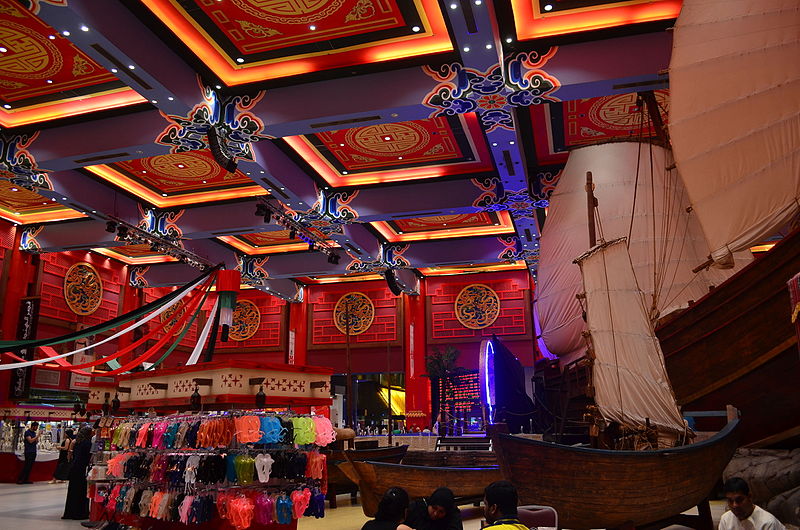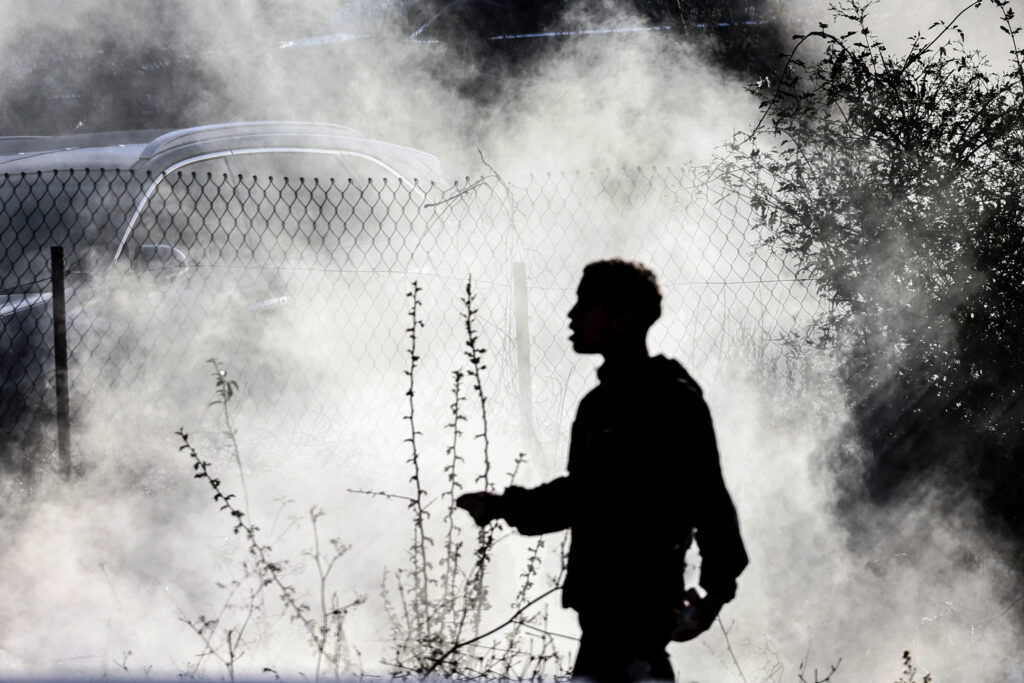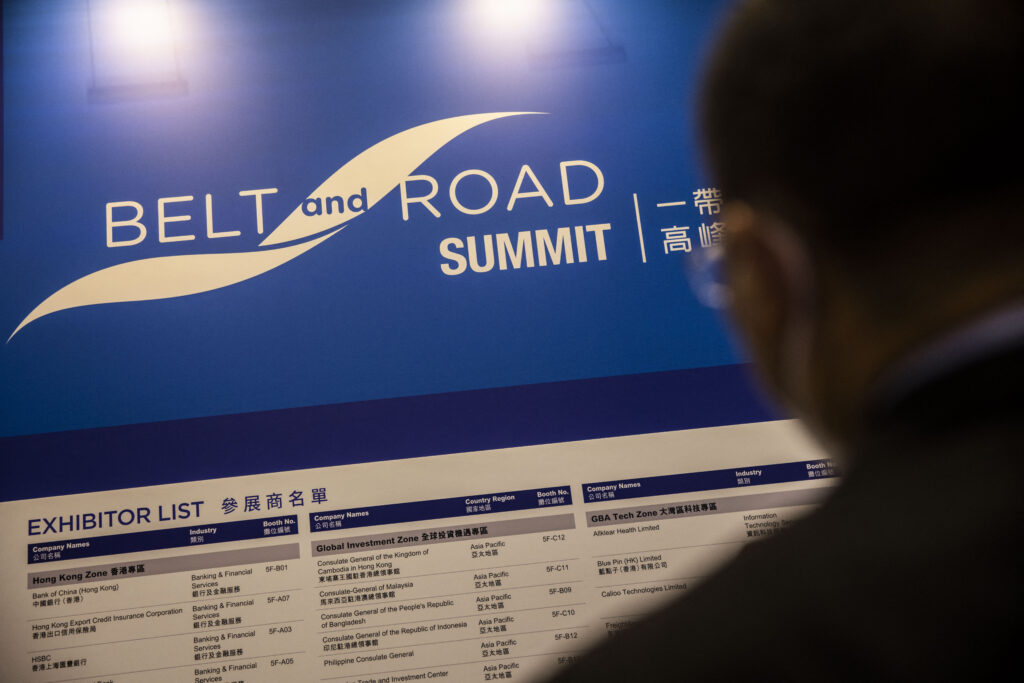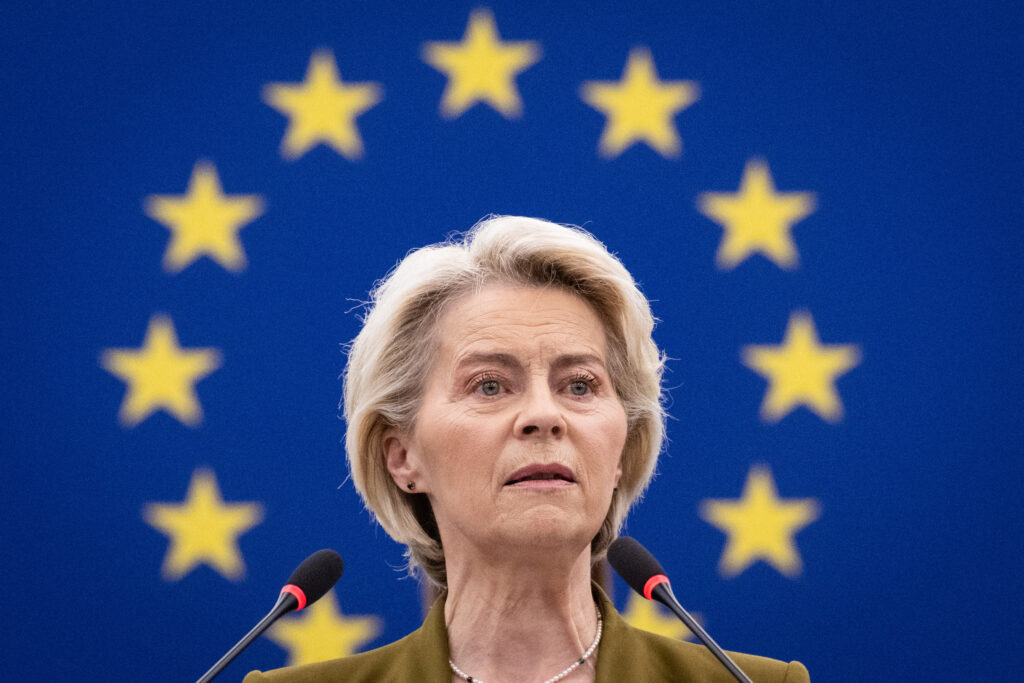Cities and Networks Insights Series – A Note from the Editorial Team
The textile trade has contributed remarkably to Dubai’s non-oil economy for years, and it is well known that China has been Dubai’s most significant partner in this trade since the early 2000s. What is less well known is that much of this trade involves the work of the Indian diasporas in China and Dubai. In this short essay, Ka-Kin Cheuk highlights the role played by the Indian diaspora network in the development of the China-Dubai textile trade.
By Ka-Kin Cheuk
Every day, tons of textiles from China — particularly fabrics — arrive in or pass through Jebel Ali port, the busiest container port in the Middle East, where the free trade zone of Dubai is also located. For some years now, China has been the most important import partner of the United Arab Emirates (UAE) in seaborne trade involving non-oil commodities. Textiles and clothing products constitute a significant component of this trade, and, in fact, China is the largest source of textiles and clothing products for the UAE. From Jebel Ali port, bulks of made-in-China fabrics are quickly re-exported to other countries, sent to warehouses near the port, or delivered to several wholesale shops in Bur Dubai and Deira Dubai. Given the sheer volume of this China-Dubai trade, it is clear that the Dubai textile and clothing market is indispensable to Chinese suppliers.
In Dubai, importing fabrics from China is not simply a China-Arabia story. In most cases, it involves the work of Indian diasporas in China and Dubai, who mediate the transnational deal-making processes. This short essay will show that one cannot understand the development of this bilateral trade without dealing with the connection between these two localities and the Indian diasporas.
The Indian diaspora in China, especially the Indians based in Keqiao, are the key players in enabling much of the China-Dubai fabric trade. Located in China’s Zhejiang Province as a third-tier Chinese city, Keqiao is a major distribution marketplace for fabrics. It accounts for over one-third of the volume of China’s fabric trade, with over half of it being exported. Keqiao is particularly important in exporting low-cost fabrics, which are popular in Southeast Asia, South Asia, the Middle East, Africa, and Latin America. While still largely unknown to most outsiders, the small Chinese city is now a household name for Indians in the textile industry. Over 5,000 Indian traders, most of them Sindhis and males, have moved to live and work in Keqiao. These Indians are neither producers nor final consumers of the fabrics but indent agents earning commissions from either the buyers or sellers or both sides. Most of their businesses rely on the well-established sales networks linking fabric markets throughout Asia, the Middle East, Europe, and Africa, with much of the fabric exports going to or through Jebel Ali.[1]
The majority of Indians in Keqiao are closely connected with their ethnic brethren in Dubai in terms of migration trajectory and networks. To borrow a phrase from anthropologist Parminder Bhachu,[2] Indians in Keqiao can be called “twice” or “thrice” migrants because of their common experiences of multiple migration. Before relocating to China, most of these Indians had worked in Dubai in business sectors related to the textile trade. Many of them had lived in Dubai for over a decade in the 1990s and 2000s. Before they arrived in Dubai, these Indians — who are mostly in their late 40s or 50s now — were usually internal migrants in India over the 1980s, having the experience of working in a number of Indian trading cities such as Delhi, Surat, Kolkata, and Mumbai. Among the younger-generation Indians in Keqiao, some were even born and raised in Dubai, with many of them viewing Dubai as their home although they are not eligible for UAE citizenship and can only hold Indian citizenship.
Indian migration to Dubai has a long history. Indians are the largest among foreigners resident in Dubai, with most of them living in Dubai’s downtown areas or what is usually called “old Dubai”. Anthropologist Neha Vora’s Impossible Citizens: Dubai’s Indian Diaspora[3] provides one of the most detailed and comprehensive ethnographies of the Indian communities in Dubai. According to the book, Dubai is usually embraced as “India extended” or “an extended city of India” by the local Indians, notwithstanding their non-citizen status in the UAE.[4] The book focuses on illustrating how the everyday workings of the kafala system — the restrictive and highly selective immigration regime applied in several Arab countries, including the UAE — has paradoxically facilitated a strong sense of belonging to Dubai among the local Indians. Given its Dubai-centricity, Vora’s book does not discuss much the ongoing human, goods and capital circulations, exchanges, and connections that condition the survival of many Indian businesses in Dubai, particularly those that depend on transnational trade.
One of the missing pictures in Vora’s book is the transformation that has been brought about in Dubai by the growing global influence of China. While Dubai remains a key intra-Asian hub for re-exporting low-value goods, the rise of China as the world’s factory has fundamentally changed the way Indians do trade in Dubai, for example. Throughout the 1980s and 1990s, most Indian traders in Dubai leveraged the existing supply networks, particularly the linkages with their home country, India, and/or the other traditional hubs of Indian trading diasporas, such as Hong Kong.[5] But most of these traders’ attentions shifted to China around the time when China officially became a member of the World Trade Organization (WTO) in 2001. That was also the time when fabric traders in Dubai began to send people to Keqiao to explore the emerging textile supply marketplace in China. That move triggered a few waves of Indian migration from Dubai to China, with Keqiao being one of the major destinations.
These waves of migration to China were business-oriented. For Indian traders in Dubai, sending trusted people to Keqiao was more than necessary, given that very few of them had prior exposure to anything Chinese. In so doing, Indians in Dubai have since established stronger and closer links with the Chinese supply chains in Keqiao, and each side has become more mutually dependent. More specifically, the Indians’ traditional market strength in Dubai has helped many Chinese suppliers participate in the global textile trade. This is especially the case for small-scale Chinese companies in Keqiao, which would not otherwise have been capable of handling international trade by themselves.

Source: Multi-year data gathered from “United Arab Emirates Textiles and Clothing Imports by Country and Region”, World Integrated Trade Solution, World Bank, https://wits.worldbank.org/CountryProfile/en/Country/ARE/Year/2016/TradeFlow/Import/Partner/all/Product/50-63_TextCloth.
Recent developments in the global economy, however, cast doubt on the sustainability of the China-Dubai fabric trade through Indian connections. Initially, the 2008 global financial crisis, which had severely hit various business sectors, left the textile and clothing trade in Dubai largely unscathed. Despite a drop in the immediate aftermath of the crisis in 2007-2008, the UAE’s textile and clothing imports subsequently showed robust growth (see figure above). Indeed, the quantum of textile and clothing imports in 2014 was more than double that of 2007. China certainly provided the strongest impetus to such growth, with textile imports from China more than doubling during the same period. Likewise, for China, the UAE was an important importer of Keqiao’s textile and clothing products, topping the list in 2016.[6] But the demand for textile-related products from the UAE drastically decreased in 2014-2015, which more or less coincided with the time when China’s export economy began to fall sharply. It appears that Dubai cannot quite deal with the slowdown of the Chinese economy, given that there is a lack of global economic stimulus elsewhere, other than from China. In 2017, despite its relentless drop in the share of global trade, China managed to become the UAE’s largest trade partner for the first time, displacing India. Against this backdrop, Indian traders in Dubai, as well as their business associates in China, are facing unprecedented challenges in terms of business collaborations or, more precisely, market survival in an increasingly volatile global economy.
Ka-Kin Cheuk is a Postdoctoral Fellow for Global Asia at the NYU Shanghai.
[1] See Cheuk, Ka-Kin, “Everyday Diplomacy among Indian Traders in a Chinese Fabric Market,” The Cambridge Journal of Anthropology 32 (Autumn 2016): 42-58.
[2] Parminder Bhachu, Twice Migrants: East African Sikh Settlers in Britain (London: Tavistock, 1985).
[3] Neha Vora, Impossible Citizens: Dubai’s Indian Diaspora (Durham, N.C: Duke University Press, 2013).
[4] Ibid., 67–74.
[5] See Mark-Anthony Falzon, Cosmopolitan Connections: the Sindhi Diaspora, 1860-2000 (Leiden: Brill, 2004).
[6] “Nian Shaoxingshi Keqiaoqu Guominjingji He Shehuifazhan Tongjigongbao (Statistical Report of the National Economy and Social Development at Keqiao District of Shaoxing City, 2016),” accessed June 27, 2018, http://www.kq.gov.cn/sxxmhw/01/0104/010402/201703/t20170329_436290.shtml.





